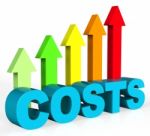What is accounting and its purpose?
What is accounting and its purpose?s

I am sure most people who run small businesses are eager to answer this question because of the fear they face with money. Here is the answer, try to read and understand to have peace of mind.
All the numbers in a business are recorded, and the text belongs to those numbers used in financial statements.
It helps bill your customers, make payments to suppliers, and calculate the business’s profitability. Besides, you can track the cash flow in and out in preparing the cash flow statements.
What is accounting and its purpose?
The system helps users such as stakeholders, lenders, business owners, employees, customers, and suppliers.
Stakeholder needs in the business analysis are similar to business needs in that they also collect and describe information. It concerns business goals, strategies, objectives, targets, and critical concerns about successes, challenges, risks, and problems. They also utilize financial statements to do business in decision-making, like lending and investments.
Small business accountants require monitoring of bookkeeping, bank reconciliations, and the rest of the accounting work, like preparing financial statements. However, accounting professions involve three fields: tax, audit, and advisory. The tax work focuses on the computations of the tax and the tax filing. The audit consists of the validation of financial statements and internal control. The advisory helps in general financial consulting, like growing the business or making new investments.
Accounts there are five different types of accounts:
- Assets
- Liability
- Equity
- Revenue
- Expenses.
Asset accounts:
Fixed assets, tangible assets, and non-tangible assets.
Cash and cash equivalents, accounts receivable, inventory, allowance for doubtful accounts, prepaid expense, investment, property, plant, and equipment, intangible assets, accumulated income, and others
Liability accounts:
Accounts payable, notes payable, accrued expenses, deferred revenue, long-term bonds payable, salaries and wages owing, creditors, etc.
Equity accounts:
Equity is the remaining value of the owner’s interest after considering all the expenses.
Stock, additional paid-in capital, retained earnings, treasury stock (contra account), and others.
Revenue accounts:
Sales revenue, investment income, and others
Expense accounts:
Selling, general, and administrative, interest, repairs, depreciation (non-cash), amortization (non-cash), and others
Financial Statements
Financial statements are the results of the completed accounting record. It consists of the balance sheet, income statement, statement of shareholders’ equity, statement of cash flows, and notes to the financial statements. The information provides predictive value, feedback, and timely data to stakeholders.
· The balance sheet reports business assets, liabilities, and equity up to a specific period
· The income statement reports the profit and loss activity for a specified period
· The statement of shareholders’ equity reports detail of investment received and prior earnings
· The statement of cash flows reports the ins and outs of cash in three categories: Operating, investing, and financing
· The notes to the financial statements disclose information that cannot understand with the financial statements alone
Accounting functions based on accounting principles
Journal entries mean recording the data.
Making ledgers is the classification of those records.
Prepare the summary as a Balance sheet and profit and loss account.
When communicating with stakeholders, use financial statements.
What is accounting and its purpose?
You are currently accounting work done using accounting software unless your business is tiny. Using software gives more accuracy, saves time, and is cost-effective as you will not need too many staff like in the past. It gives you more feasibility as you can access your accounts from anywhere because of the latest cloud accounting system. Therefore, technology development helped the accounting industry to do reports better.
I am sure most people who run small businesses are eager to answer this question because of the fear they face with money. Here is the answer, try to read and understand to have peace of mind.
All the numbers in a business are recorded, and the text belongs to those numbers used in financial statements.

It helps to bill your customers, make payments to suppliers, and calculates the profitability of the business. Besides, you can track the cash flow in and out in preparing the cash flow statements.
The system helps users such as stakeholders, lenders, business owners, employees, customers, and suppliers.
Stakeholder needs in the business analysis are similar to business needs in that they also collect and describe information. It concerns business goals, strategies, objectives, targets, and critical concerns about successes, challenges, risks, and problems. They also utilize financial statements to do business in decision-making, like lending and investments.
Small business accountants require monitoring of bookkeeping, bank reconciliations, and the rest of the accounting work, like preparing financial statements. However, accounting professions involve three fields: tax, audit, and advisory. The tax work focuses on the computations of the tax and the tax filing. The audit consists of the validation of financial statements and internal control. The advisory helps in general financial consulting, like growing the business or making new investments.
Accounts there are five different types of accounts:
- Assets
- Liability
- Equity
- Revenue
- Expenses.
Asset accounts:
Fixed assets, tangible assets, and non-tangible assets.
Cash and cash equivalents, accounts receivable, inventory, allowance for doubtful accounts, prepaid expense, investment, property, plant, and equipment, intangible assets, accumulated income, and others
Liability accounts:
Accounts payable, notes payable, accrued expenses, deferred revenue, long-term bonds payable, salaries and wages owing, creditors, etc.
Equity accounts:
Equity is the remaining value of the owner’s interest after considering all the expenses.
Stock, additional paid-in capital, retained earnings, treasury stock (contra account), and others.
Revenue accounts:
Sales revenue, investment income, and others
Expense accounts:
Selling, general, and administrative, interest, repairs, depreciation (non-cash), amortization (non-cash), and others
Financial Statements
Financial statements are the results of the completed accounting record. It consists of the balance sheet, income statement, statement of shareholders’ equity, statement of cash flows, and notes to the financial statements. The information provides predictive value, feedback, and timely data to stakeholders.
· The balance sheet reports business assets, liabilities, and equity up to a specific period
· The income statement reports the profit and loss activity for a specified period
· The statement of shareholders’ equity reports detail of investment received and prior earnings
· The statement of cash flows reports the ins and outs of cash in three categories: Operating, investing, and financing
· The notes to the financial statements disclose information that cannot understand with the financial statements alone
Accounting functions based on accounting principles
Journal entries mean recording the data.
Making ledgers is the classification of those records.
Prepare the summary as a Balance sheet and profit and loss account.
When communicating with stakeholders, use financial statements.
What is accounting and its purpose?
You are currently accounting work done using accounting software unless your business is tiny. Using software gives more accuracy, saves time, and is cost-effective as you will not need too many staff like in the past. It gives you more feasibility as you can access your accounts from anywhere because of the latest cloud accounting system. Therefore, technology development helped the accounting industry to do reports better.

